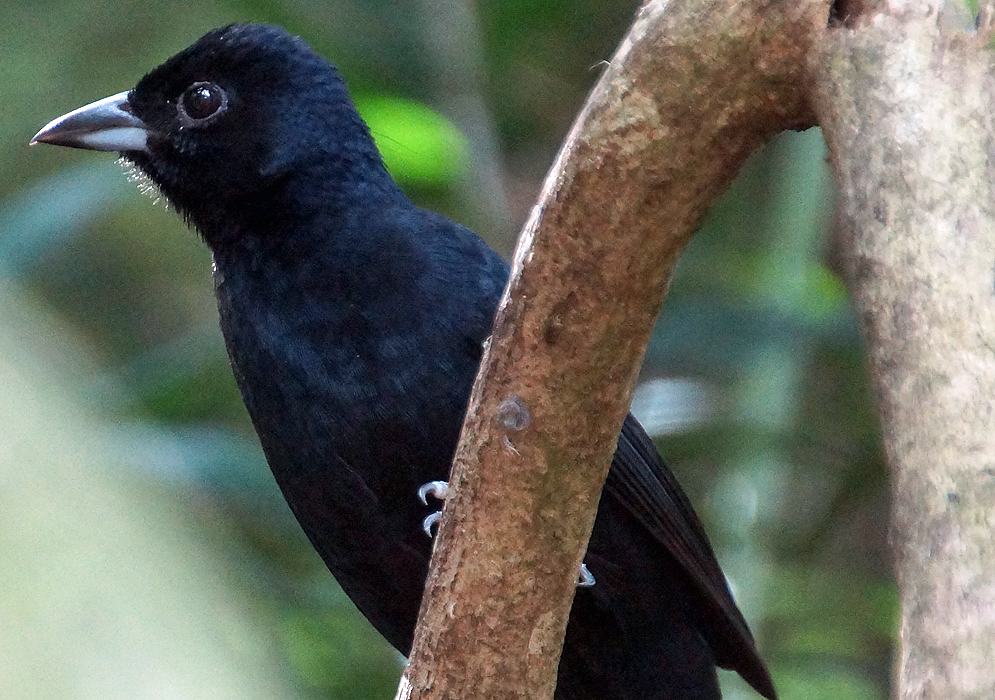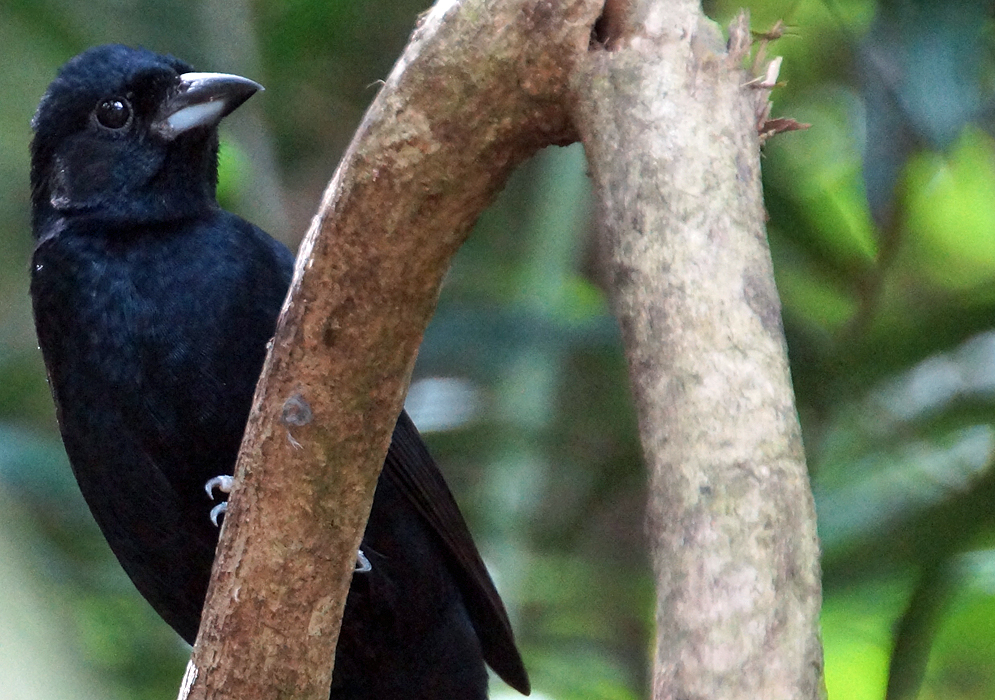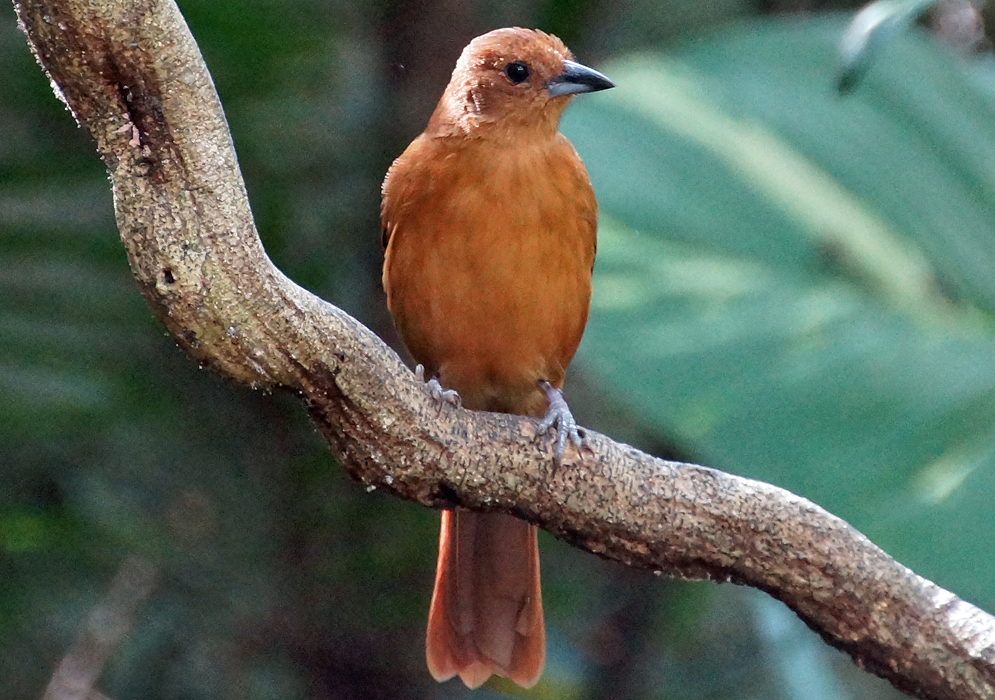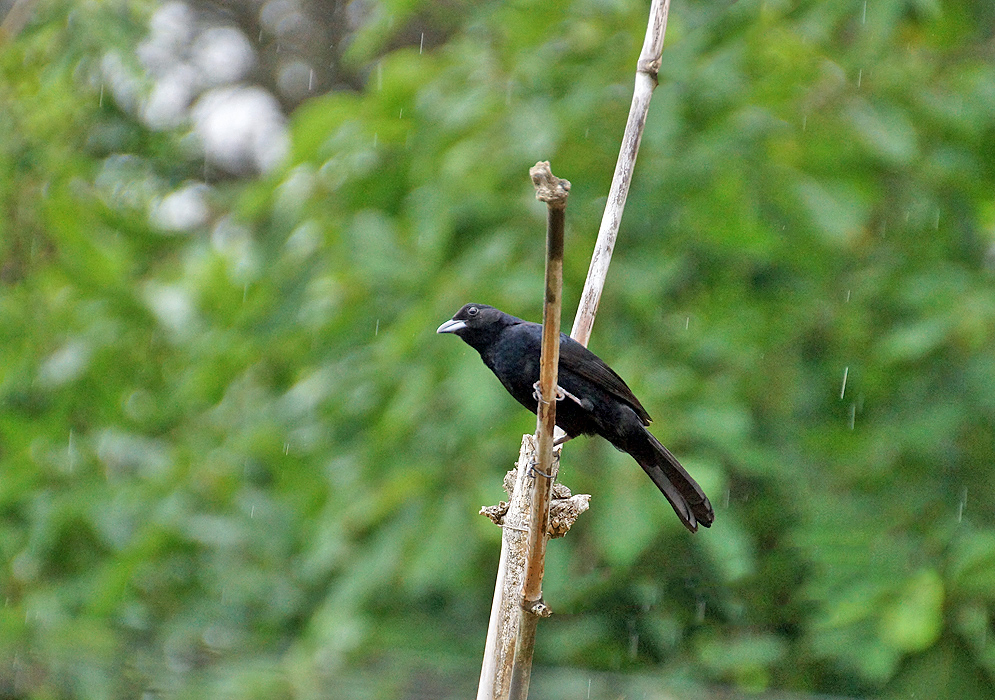This post has 11 Simple Fields-fields attached. Show fields.

The White-lined Tanager is a medium-sized passerine bird native to Costa Rica down to northern Argentina. The White-lined Tanager measures approximately 7.3 inches in length and weighs around 1.2 ounces. Males of this species exhibit a distinctive glossy black coloration, with the exception of white underwing coverts and a small white patch on the upperwing, which are prominent in flight but otherwise inconspicuous. Females and immature birds, in contrast, display an entirely rufous plumage, which is somewhat paler below. The White-lined Tanager is known for its adaptability to various habitats, including semi-open areas and gardens, indicating a level of comfort in human-modified landscapes. During the breeding season, males engage in a display of their white wing spots to attract females. The female then builds a bulky cup nest in a tree or shrub, where she incubates two to three brown-blotched cream eggs for about 14 to 15 days. On average, the species raises two broods per season. White-lined Tanagers are territorial, usually with only one nesting pair per area, and they are not typically seen joining mixed feeding flocks. The White-lined Tanager consumes a wide variety of fruits, especially epiphytes. They also feed on nectar and various insects, such as beetles, ants, and grasshoppers. The species is currently listed as of "Least Concern" by the IUCN with a population size of over 5 million. Photographed in the Sierra Nevada de Santa Marta, Colombia.









